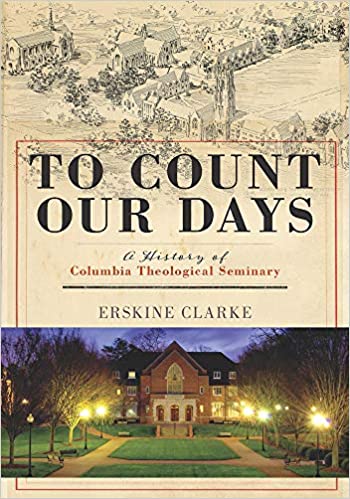
对该机构的调查是许多重要文化变迁的焦点,南方和更广泛的教会在历史上一直与这些变迁作斗争
哥伦比亚神学院丰富的历史为了解美国南方的社会和知识生活提供了一扇窗户。1828年,作为一所长老会神学院成立,为受过良好教育、举止文雅的牧师做准备,在成立的头一百年里,它位于南卡罗来纳州的哥伦比亚。在战前时期,它以其富有且智力成熟的董事会、教员和学生而闻名。它的领导人试图在包括奴隶制在内的当今重大知识和社会问题上走中间路线。哥伦比亚的领导人,在林肯当选之前都是工会主义者,成为了南部邦联的狂热支持者。虽然该神学院在1865年的城市大火中幸存下来,但它仍然处于贫困状态,无法应对现代世界的挑战。然而,神学院开始了一场关于达尔文主义的严肃辩论。伍德罗·威尔逊(Woodrow Wilson)的叔叔詹姆斯·伍德罗(James Woodrow)教授提倡温和的达尔文主义,但反动势力导致该神学院越来越偏狭,思想上越来越孤立。
1928年,神学院迁至亚特兰大大都会,标志着从旧南方向新南方(商业)的过渡。这所神学院为它美丽的新校园带来了长期以来的神学承诺和种族主义假设。在詹姆斯·麦克道尔·理查兹(James McDowell Richards)的领导下,哥伦比亚与贫困、地方主义和根深蒂固的种族主义作斗争。到了二十世纪最后十年,哥伦比亚大学已经成为该国资金最雄厚的神学院之一,拥有国际认可的教员,学生来自世界各地和许多基督教教派。
到了21世纪初,哥伦比亚大学的教师和学生已经拥有了广泛的多样性。哥伦比亚大学的发展挑战了关于长老会、南方和美国意味着什么的假设,因为神学院继续其主要使命,为教会提供一个博学的事工。
阅读更多
To Count Our Days: A History of Columbia Theological Seminary
An investigation of the institution as a focal point for the many important cultural shifts with which the South and the wider Church have wrestled historically
Columbia Theological Seminary’s rich history provides a window into the social and intellectual life of the American South. Founded in 1828 as a Presbyterian seminary for the preparation of well-educated, mannerly ministers, it was located during its first one hundred years in Columbia, South Carolina. During the antebellum period, it was known for its affluent and intellectually sophisticated board, faculty, and students. Its leaders sought to follow a middle way on the great intellectual and social issues of the day, including slavery. Columbia’s leaders, Unionists until the election of Lincoln, became ardent supporters of the Confederacy. While the seminary survived the burning of the city in 1865, it was left impoverished and poorly situated to meet the challenges of the modern world. Nevertheless, the seminary entered a serious debate about Darwinism. Professor James Woodrow, uncle of Woodrow Wilson, advocated a modest Darwinism, but reactionary forces led the seminary into a growing provincialism and intellectual isolation.
In 1928 the seminary moved to metropolitan Atlanta signifying a transition from the Old South toward the New (mercantile) South. The seminary brought to its handsome new campus the theological commitments and racist assumptions that had long marked it. Under the leadership of James McDowell Richards, Columbia struggled against its poverty, provincialism, and deeply embedded racism. By the final decade of the twentieth century, Columbia had become one of the most highly endowed seminaries in the country, had internationally recognized faculty, and had students from all over the world and many Christian denominations.
By the early years of the twenty-first century, Columbia had embraced a broad diversity in faculty and student. Columbia’s evolution has challenged assumptions about what it means to be Presbyterian, southern, and American, as the seminary continues its primary mission of providing the church a learned ministry.
Read more
OR




![未来和平:技术、侵略和战争的冲动[有声读物]](https://www.yousuxue.com/wp-content/themes/riplus/timthumb.php?src=https://sanet.pics/storage-8/0422/nrEGEGAogddbzxF8S0ghv2nV7vpdd0dV.jpg&h=200&w=300&zc=1&a=c&q=100&s=1)